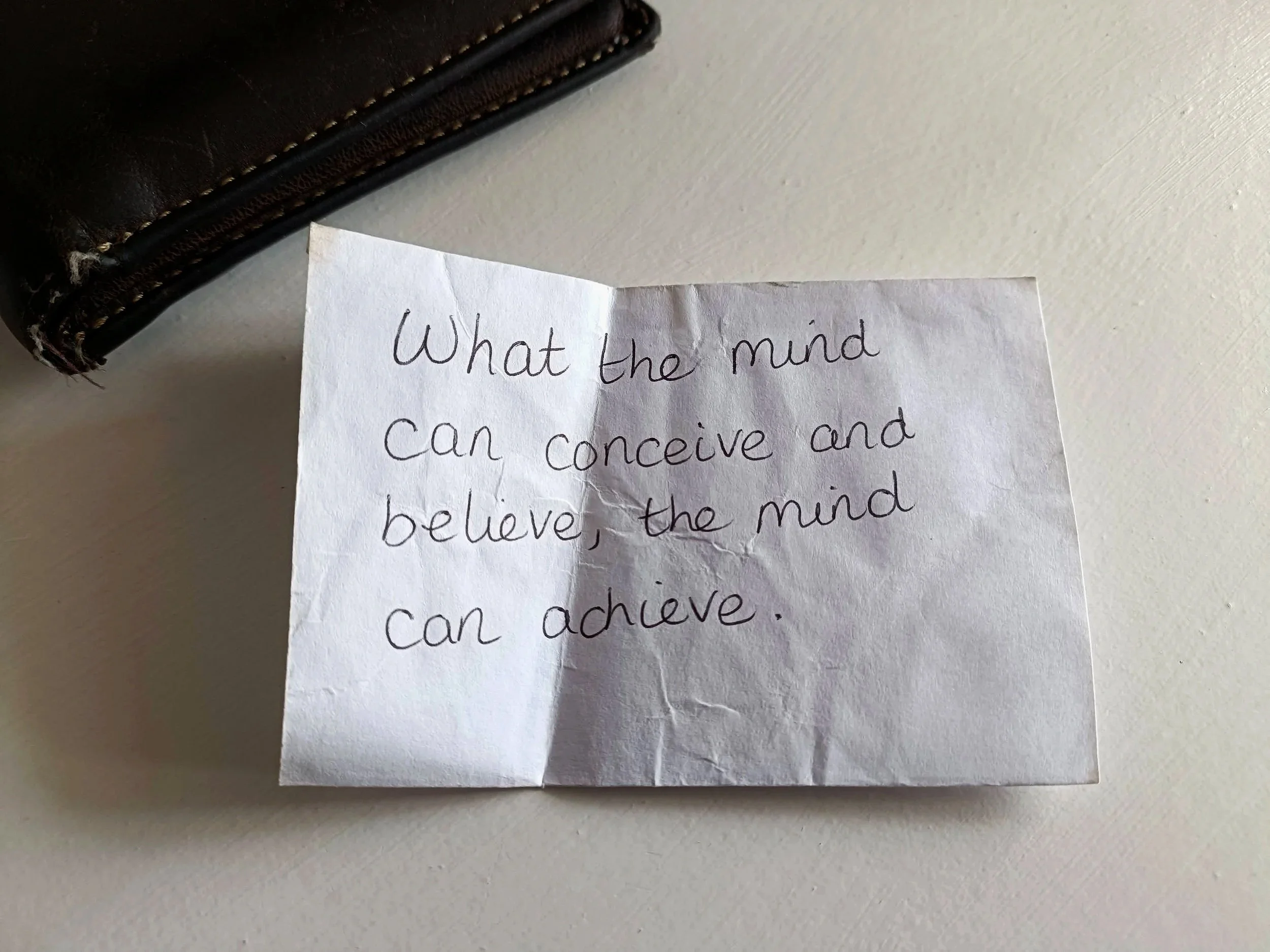How to Discover Your Vision (And Start Living It)
When was the last time you really thought about where you’re heading in life? Not just what’s on your to-do list this week, but the big picture — the future you’d love to be living in five, ten, or twenty years’ time.
For me, that future is crystal clear. I can see myself one day stepping onto the TED stage, holding a copy of my own published book, and greeting a queue of people at a book signing afterwards. I can picture the house I’ll live in, the feeling of walking through its front door, and the sense of warmth, connection, and joy within it. I can imagine the trips I’ll take, the people I’ll meet, and the abundance of both health and business success that will make it all possible.
That’s my vision. And I believe everyone has one inside them — sometimes it’s clear and detailed, sometimes it’s just a feeling or a vague direction. But without it, life can feel a little like setting out on a journey without a destination.
What is a Vision?
A vision is the picture of the future you most want to create. It’s not just about possessions or achievements — it’s about how you want to feel, who you want to become, and what you want your life to stand for.
It can be:
Specific (a house, a business, a milestone like a TED talk),
Or more general (a sense of happiness, freedom, or connection).
There’s no right or wrong way to define it. What matters is that it gives you something to aim for — a sense of direction, a reason to keep moving forward, especially on the tough days.
Think of it this way: you wouldn’t get on a plane with no idea where it’s going. You wouldn’t set out on a voyage without a map. Your vision is your destination — and while the route might change, having that destination matters.
1. The Five-Year Question
Imagine we meet for coffee in five years’ time, and you tell me: “David, it’s been the best five years of my life.”
What would you tell me had happened? How would you be feeling? What would have changed?
If five years feels too far away, bring it down to one year. If it feels too short, stretch it to ten. The point is to picture the best version of your future and notice what comes up. If this feels like too much of an ask, try out the tool below…
2. The Wheel of Life
This tool breaks life into different areas: career, finances, health, family and friends, romance, personal growth, fun and recreation, and your physical environment. For each, ask: What would 10 out of 10 look like for me here? Your answers will form the building blocks of your vision.
For me, 10 out of 10 in health would mean being able to cycle 100 miles in a day and feeling great in my own skin. For relationships, 10 out of 10 is about open, honest, and supportive connections with friends and family. For fun and recreation, 10 out of 10 is about indulging in hobbies that both engage and challenge me to grow, which I can also enjoy with others.
Download a copy of the worksheet and have a go! I’d love to hear what you come up with, if you’d be willing to share ;-)
3. The Rocking-Chair Analogy
Picture yourself in later life, sitting in a rocking chair surrounded by loved ones. You’re sharing stories of your life. What would make you say: I’ve lived a great life! I’ve done the things I wanted to do, been to the places I wanted to go, and built the relationships I wanted to build…
This perspective helps to clarify what’s most important to you, and even invites you to think about the legacy you want to leave behind.
Depending on how far you want to go, you might want to consider what you’d like your eulogy to say, or what you’d like (or not like) to be written on your gravestone. The idea here isn’t to be morbid! On the contrary, it’s about considering what really matters to you, deep down.
4. The Worst-Case Scenario
If you’re struggling, try this: grab a piece of paper, draw a line down the middle, and on the left hand side, write down what a terrible life would look like for you. What it looks like, what’s missing, and how it feels.
On the right hand side, write down the opposites to everything you wrote. The opposite of each of the ‘worst case’ points might reveal a key part of your vision.
For me, loneliness and isolation would be a nightmare. The opposite? Connection, community, family, and belonging. That belongs in my vision.
From Vision to Action
Of course, it’s not enough to just have a vision — you have to do something with it.
One of my favourite tools is a vision board. I’ve created both physical versions (with magazine cuttings) and digital ones. On hard days, when I feel stuck or low, looking at my vision board reminds me why I’m doing the work and keeps me moving forward.
And here’s the crucial part: your daily choices either bring you closer to your vision, or pull you away from it. Ask yourself regularly: Is what I’m doing right now in alignment with the future I want to create?
The answer might surprise you.
Why Your Vision Matters
Life isn’t about drifting. It’s about direction. A clear vision gives you:
Purpose when you feel lost,
Motivation when you feel tired,
And resilience when life gets tough.
Or as my mum once reminded me in a note I still carry: “What your mind can conceive and believe, you can achieve.”
Your Turn
Grab a notebook, pick one of the questions above, and start writing. Don’t filter yourself. Don’t worry about being “practical.” Just imagine.
Because once you can see your vision clearly, you can start moving towards it — one step, one choice, one action at a time.
And if you’d like to explore how working with a coach could unlock your future path to success, reach out now! I’d love to have a conversation with you.
Here’s to your ongoing and future success!
- David
The Solo Coach




